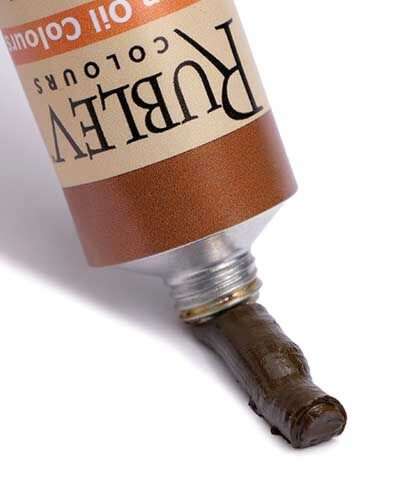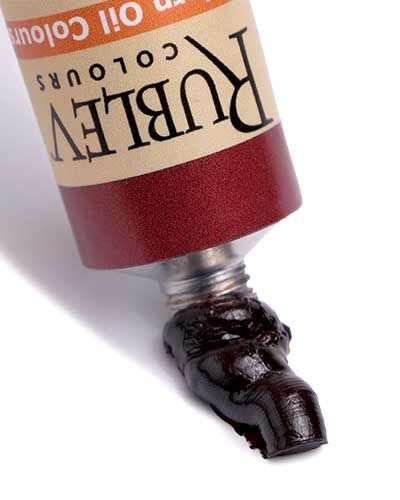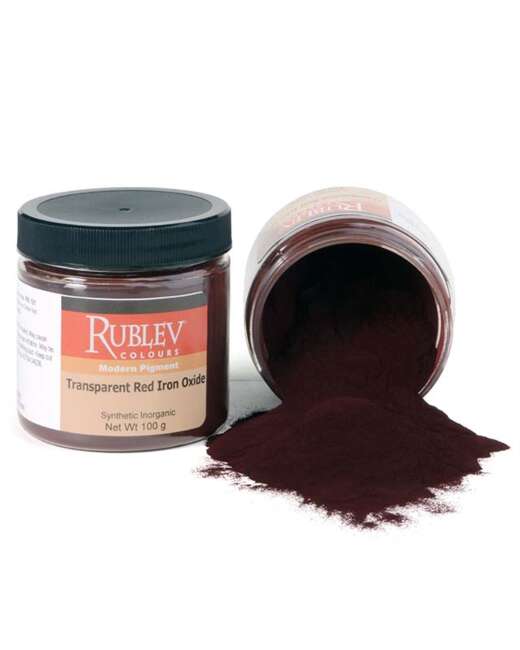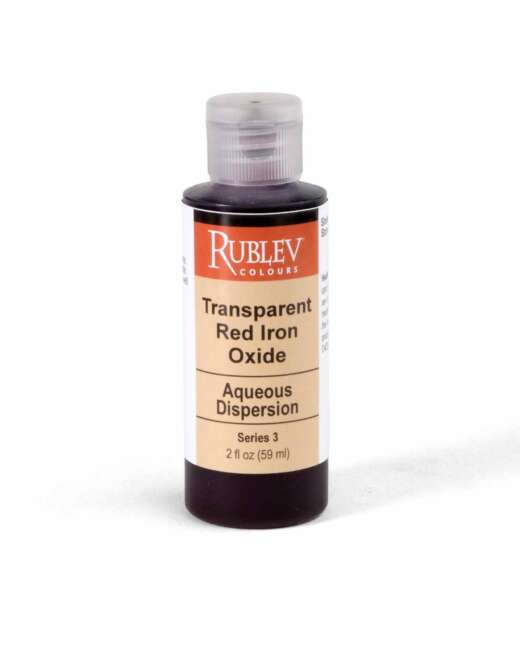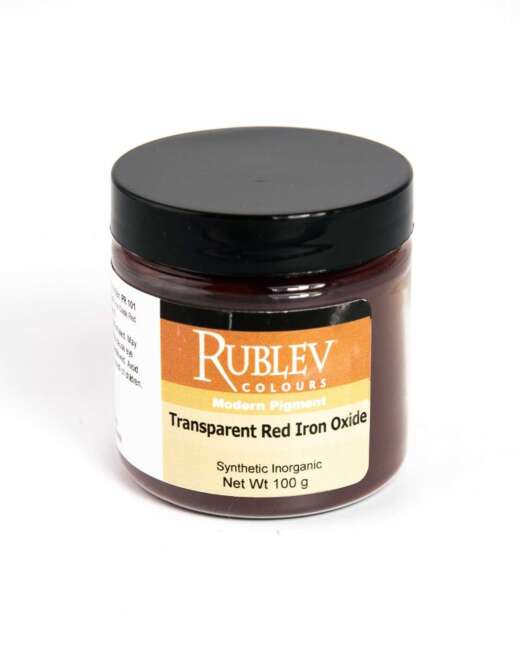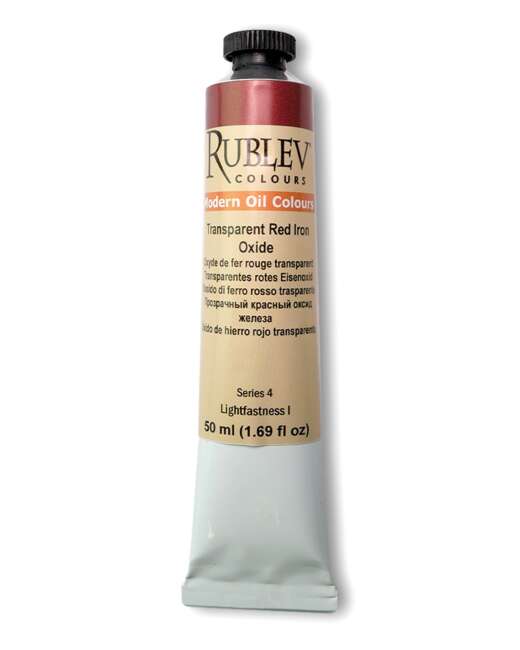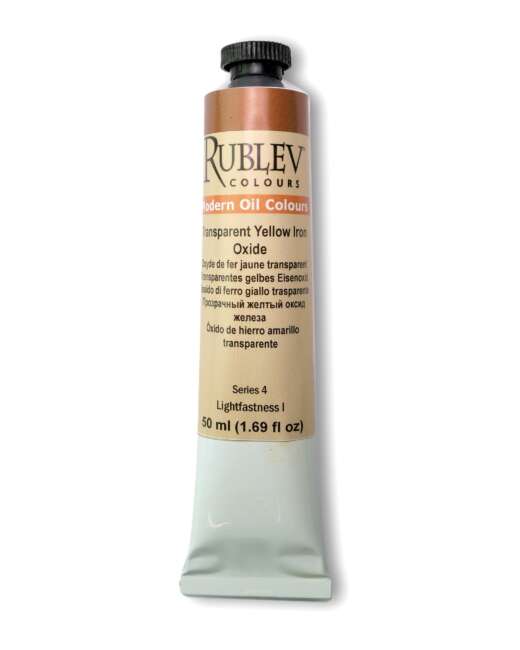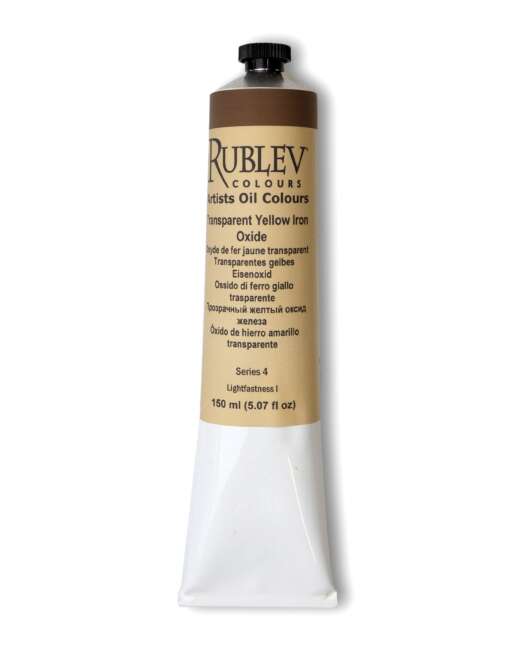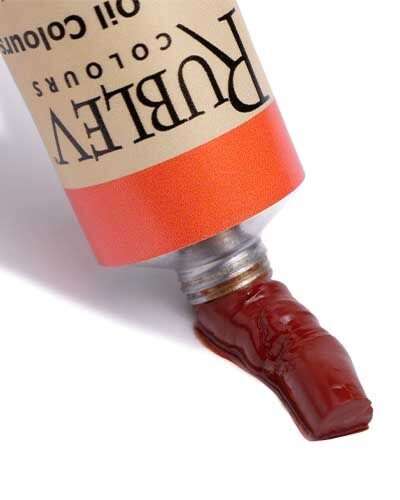Titanium dioxide is typically not transparent; it is known for its high refractive index and opacity, making it an excellent white pigment used widely in paints, coatings, and plastics. Titanium dioxide nanoparticles are particles smaller than 100 nanometers; a nanometer is 1/1 billionth of a meter. At these small sizes and at low concentrations, titanium dioxide appears transparent, allowing for effective sunscreens that do not appear white. They are typically not useful as pigments in artists' paint.
Expert Guide to Transparent Iron Oxide Pigments for Artists

For artists, understanding the historical development and technical aspects of iron oxide pigments is essential. Since the late 19th century, these pigments have been produced commercially, addressing the inconsistencies found in colors derived from natural sources. Initially, these commercially produced pigments featured predominantly large particle sizes, which maximized opacity and ensured a high degree of color strength, along with uniform and uncontaminated products. Their primary use was largely in the construction industry.
However, over the past four decades, a shift in demand has emerged, particularly for pigments that combine color richness, transparency, and ultraviolet (UV) light protection. Synthetically produced transparent iron oxides have risen to meet this demand, offering superior purity, consistency, cleanliness, and clarity. This development is particularly pertinent for artists who require these specific attributes in their work.
The synthetic production process of transparent iron oxide pigments allows for a variety of hues and pigment shapes (morphologies). These pigments are available across a range of pH values, from acidic (around pH 3.0) to slightly alkaline (up to pH 8.5). It is noteworthy that acidic pigments often present cleaner shades but pose challenges in terms of full dispersion. Such acidic grades are generally not recommended for waterborne systems due to their potential to disrupt the chemical balance and cause resin precipitation. On the other hand, neutral and slightly alkaline pigments are favored for their enhanced dispersion stability and superior performance, particularly in waterborne systems.
For oil painters, this nuanced understanding of iron oxide pigments — from their historical evolution to their chemical properties — is vital. It informs the selection and application of these pigments, ensuring that their artistic vision is realized with the desired aesthetic qualities and durability.
Insights into the Manufacturing Process of Transparent Iron Oxide Pigment
The manufacturing process of transparent iron oxide pigments involves the precipitation and oxidation of iron from a solution of ferrous salt, with ferrous sulfate being the preferred choice. This sulfate is commonly obtained as a byproduct in the production of titanium dioxide pigment or from the steel pickling process.
The manufacture of iron oxide particles commences with the reaction of the ferrous salt with an alkali. This interaction results in the formation of a 'green rust' gel, which then undergoes oxidation to produce iron oxide particles. The exact color, dispersibility, and transparency of the pigment are governed by key parameters: the pH level, concentration, temperature, and reaction rate during the manufacturing process.
An essential aspect that artists should consider is the purity of the resulting crystals, particularly in terms of foreign metal contaminants and the specific crystal phase. This purity significantly influences the hue and chroma of the pigment. Different phases of iron oxide yield different colors; for instance, goethite imparts a greenish shade of yellow, while lepidocrocite offers a reddish yellow hue. Understanding these nuances in the production process can enrich an artist's knowledge and appreciation of the pigments they use, enabling them to make more informed choices in their artistic endeavors.
Overview of Black and Brown Iron Oxide Pigment Production for Oil Paints
The production methods of black and brown iron oxide pigments directly impact the quality and characteristics of these colors. Black iron oxides are typically created through two distinct processes: either via direct precipitation and oxidation or through the partial reduction of red iron oxide in a calcination process.
Brown iron oxides, on the other hand, are generally formulated by blending red, yellow, and black pigments to achieve specific shades. Notably, in 1995, Johnson Matthey introduced a groundbreaking method involving the substitution of iron within the hematite structure. This innovation produces a singular brown pigment, distinguished by its enhanced thermal stability, lightfastness, and resistance to weathering, surpassing the properties typically found in blended pigments.
Post-production, the iron oxide undergoes a critical phase where the goethite crystals formed are filtered and washed. This step is essential to remove salts accumulated during the precipitation process. Neglecting this stage can lead to increased aggregation, negatively affecting the pigment's dispersibility and potentially impacting the performance within the resin medium.
Furthermore, the drying process, particularly for non-calcined products, is a delicate operation. Over-drying can lead to further aggregation, thereby diminishing the pigment's dispersibility. For artists, this translates into a need for careful selection of pigments, understanding that their manufacturing and post-production treatments can significantly influence the behavior and quality of the paint on the canvas. This knowledge is invaluable for achieving desired artistic effects and ensuring the longevity and stability of their artwork.
Comprehensive View into the Manufacture of Transparent Red Iron Oxide for Oil Paints
For professional artists, particularly those specializing in oil painting, understanding the intricate process of producing transparent red iron oxide pigments is essential. While direct precipitation can be used to create these pigments, the more traditional method involves dehydrating goethite crystals through firing. This dehydration process begins at relatively low temperatures, typically around 180°C. The specific conditions, including ambient environmental factors and the duration for which the product is maintained at this temperature, play a crucial role in the resulting color transformation from yellow (FeOOH) to red (Fe2O3) with the release of steam (H2O).
The primary characteristics of the pigment, including its size and shape, are largely established during the initial precipitation and oxidation stages. However, the subsequent calcination process is equally vital. Calcination can alter the original acicular structure of goethite crystals, leading them to assume more elliptical or spherical forms. This phase also facilitates particle aggregation and inter-particle sintering, which can effectively increase the overall particle size of the pigment.
Furthermore, it's important for artists to be aware that any milling or size reduction techniques applied to these pigments can adversely affect their dispersibility and transparency. Such processes often lead to the compaction of agglomerates, making it more challenging to adequately wet the surfaces of the primary particles. This knowledge is critical for artists who seek to manipulate the transparency and dispersion qualities of red iron oxide in their oil paintings, as it influences the final appearance and quality of their work. Understanding these processes empowers artists to make more informed choices about the materials they use, ultimately enhancing their artistic expression and the longevity of their creations.
Environmental and Safety Considerations of Transparent Iron Oxide Pigments
Through extensive toxicological evaluations, transparent iron oxide pigments have been established as non-toxic, environmentally benign, and ecologically sound. The determination of a substance's toxicity is based on a measure of lethal dose. (See Note 1.) The lethal dose (LD50) of transparent iron oxide pigments exceeds 10,000 mg/kg, indicating a high threshold for toxicity or very low toxicity. Although not inherently irritating, transparent iron oxide pigments can cause irritation to the lungs and skin at elevated concentrations.
In the United States, occupational exposure limits are set by OSHA at 15 mg/m3 TWA and by ACGIH at 10 mg/m3 TWA. In Germany, a general dust threshold of 6 mg/m3 applies, but synthetic transparent iron oxides containing less than 1% total silica are exempt from further restrictions applicable to iron oxide dust with higher silica content. Thus, the primary occupational safety measure for these pigments is the maintenance of appropriate hygiene practices to avoid exceeding these dust limits. In the European context, they are not classified as hazardous or "Special Waste" under the 1994 Chemicals Hazard Information and Packaging regulations. Additionally, they comply with the FDA's purity standards for various applications, including use in children's toys, and align with the Council of Europe AP (89)1 standards for food contact materials.
 |  |  |
| Primary Particles: Primary particles are the smallest identifiable units of pigment, discernible through imaging techniques like optical or electron microscopy. | Aggregates: Firmly bonded clusters contrasting with agglomerates, aggregates are formed when primary particles adhere to each other more robustly, typically at their surfaces. | Agglomerates: Agglomerates are clusters of primary particles or aggregates. |
Particle Characteristics of Transparent Iron Oxide Pigments
In the realm of transparent iron oxide pigments, meticulous management of the production process is paramount to achieving extremely small primary particle sizes. This fine granularity is pivotal for ensuring complete transparency when these pigments are fully integrated into the medium. The reduced particle size leads to an increased surface area of the pigments, typically ranging from 80 to 120 m²/g. Consequently, this characteristic imparts a notably higher oil absorption capacity to these inorganic pigments, generally in the range of 40 to 45% by volume/weight. Such properties are essential for professional oil painters to consider, as they directly influence the behavior and application of these pigments in their artistic works.
Implications of Particle Size of Transparent Iron Oxide Pigments
The notably small size of transparent iron oxide particles results in substantial interfacial forces among these primary particles. This phenomenon causes the particles to form aggregates, which present challenges in terms of wetting and dispersion. During production, these aggregates have a tendency to bind together, creating larger agglomerates. (See Note 2.) However, these agglomerates are markedly easier to saturate, break apart, and disperse.
For professional artists, it is crucial to understand that these aggregates, inherent in all transparent iron oxides, require advanced dispersion techniques. Processes such as bead milling or attrition milling are necessary to fully leverage the pigment's inherent transparency. Traditional high-speed mixing methods are insufficient to effectively disperse these aggregates and achieve the desired level of transparency and stability in the dispersion.
Most oil painters opt for pre-dispersed forms of these pigments in the form of prepared commercial paint to circumvent these challenges. When the pigment is appropriately dispersed, the resulting colloidal suspension exhibits excellent stability, both during storage and in the medium. This aspect of stability contrasts with larger, denser particles, which demand additional stabilization through rheological adjustments or the introduction of charge modifiers in their formulation. Understanding these properties and processing requirements is vital for artists seeking to utilize transparent iron oxide pigments effectively in their work.
Considerations for Micropulverization of Transparent Iron Oxide Pigments
Micropulverization does not necessarily facilitate enhanced dispersibility. This process often leads to the compaction of pigment aggregates, subsequently rendering them more challenging to saturate and disperse effectively. For artists working with oil paints, it is important to recognize that Johnson Matthey, a notable authority in this domain, typically advocates the use of micropulverized pigments in specific scenarios. These include situations where screen clogging poses a significant challenge or in systems with lower viscosity where poor agitation is prevalent. In such conditions, the larger particles tend to settle before they can be adequately de-agglomerated. This recommendation underscores the necessity for artists to consider the specific attributes and requirements of their painting mediums and techniques when selecting pigments for their work.
Understanding Light Interactions of Transparent Iron Oxide Pigments
In painting, the interaction of light with pigments is a fundamental concept. Light, an energy form, adheres to the law of Conservation of Energy, which dictates that within a closed system, energy cannot be created or destroyed, only transformed.

Light Interactions in a semi-transparent paint film
Reflection and Its Impact on Paintings
When light encounters the surface of a painted picture, part of it is reflected. This reflection can be of two types. Specular reflection occurs when the light reflects off the surface at an equal angle to its incidence, contributing to the glossiness of the paint. On the other hand, diffuse reflection happens due to surface irregularities, causing light to scatter in various directions. This scattering is what gives a painting its matte appearance. As a professional artist, understanding these reflections is crucial for manipulating the gloss or matte qualities of your work.
Refraction: Influencing the Depth and Hue of Color
The portion of light that penetrates the paint film undergoes refraction. This phenomenon occurs at the boundary where two substances with different refractive indices meet. The extent of refraction, or the change in the light's path, is directly proportional to the difference in these indices. For a painter, this is particularly significant as it influences the perceived depth and hue of the colors used. The way light bends as it passes through the layers of paint can dramatically alter the visual effect and tonal qualities of the artwork.
These principles of light interaction are vital for professional oil painters, as they dictate how a painting will be perceived under different lighting conditions. Mastery of these concepts allows for greater control over the visual impact of one's work, enhancing both its aesthetic appeal and expressiveness.
In-Depth Analysis of Light Absorption in Oil Paint Pigments
In the practice of painting, the absorption of light by pigments is a critical aspect that defines the essence of color. Once light permeates the pigmented layer of a painting, it interacts intimately with the pigment particles. A portion of light's energy is absorbed by these particles, a process fundamental to the manifestation of color.
Mechanism of Color Formation in Transparent Iron Oxide Pigments
The specific coloration of transparent iron oxide pigments originates from a process known as crystal field splitting. This occurs in the five d orbitals of the iron ion (Fe3+), enabling these pigments to absorb particular wavelengths of light. This absorption results in the distinct shades associated with iron oxides. It's the crystalline structure's degree of orderliness that determines which wavelengths of light are absorbed, thereby dictating the purity and exact shade of the color.
Crafting Nuances in Color Shades
Professional artists can achieve subtle variations in shades through alterations in the pigment's manufacturing process, which affects the particle shape. For instance, adjusting the aspect ratio of needle-like particles can shift yellow hues from a greenish tone to a redder yellow. This ability to fine-tune color nuances is integral to the artist's palette.
The Role of Particle Size in Color Intensity and UV Protection
Furthermore, the depth of light penetration into iron oxide particles is limited to a few atomic layers. Therefore, the absorption mechanism is effective only in a small fraction of the material. By reducing the particle size, the available surface area for color creation is expanded, leading to pigments with higher color strength and enhanced protection against ultraviolet light. For artists, this means a more vibrant color payoff and better longevity of their artwork under UV exposure.
Understanding these principles of light absorption in pigments empowers oil painters to manipulate color with precision, enabling them to convey their artistic vision with clarity and depth.
Advanced Understanding of UV Effects and Light Behavior in Oil Paints
For oil painters, an intricate understanding of how ultraviolet light and pigment particles interact is telling. The UV component of sunlight, ranging from 280 to 400 nanometers, is primarily responsible for the degradation of organic materials through the breakdown of chemical structures. Transparent iron oxide pigments play a pivotal role here, as they are highly effective in absorbing UV radiation.
Light Scattering in Paint Films
In the context of light scattering, when light encounters an iron oxide particle within the paint film and is reflected rather than absorbed, it is considered to have been scattered. This scattering of light is intricately related to the Mie theory. According to this theory, light scattering by a particle is determined by the ratio of the particle's dimensions to the wavelength of light, as well as the relative refractive indices of the pigment and the surrounding medium. This principle is essential for artists to understand, as it affects how light interacts with the paint, influencing the visual perception of color and texture.
The Significance of Particle Size in Light Transmission
The design of transparent iron oxide pigments is specifically tailored for minimal light interference. These pigments are acicular, with dimensions typically less than 20 nanometers in width and 150 nanometers in length. Such precise control over particle size ensures that certain light wavelengths are not obstructed, maintaining the pigment's transparency. For artists, this translates to control over the transparency and depth of color in their work, allowing for nuanced and vivid representations on the canvas.
In summary, an appreciation of the interactions between light, pigment particles, and the painting medium enables oil painters to achieve desired aesthetic effects through transparency. Mastery of these concepts allows for artistic expressions that are both visually stunning and enduring.
Exploring the Advantages of Transparent Iron Oxides in Oil Painting
For artists, the use of transparent iron oxide pigments offers some benefits. These pigments are renowned for their exceptional durability and resistance to outdoor conditions, making them ideal for applications in a wide variety of painting mediums. Their robustness against acids, alkalis, and various solvents, coupled with their non-bleeding and non-migratory nature, ensures the longevity and integrity of the artwork.
One of the most striking properties of transparent iron oxides is their excellent lightfastness and gloss retention, a quality verified through rigorous external exposure testing. This attribute is crucial for artists who require their works to maintain their vibrancy and sheen over time.
Contrasting Properties with Opaque Iron Oxides
The distinct particle size and shape of transparent iron oxides, as compared to their opaque counterparts, give them unique pigmentary qualities. While opaque pigments are known for their higher tinting strength, transparent iron oxides offer superior ultraviolet (UV) protection. This feature is particularly valuable for artists working on outdoor murals, as it significantly enhances the longevity and weatherfastness of their artworks.
Thermal Stability and UV Protection
The thermal stability of yellow transparent iron oxides is somewhat lower than that of the red variants. This difference is due to the chemical composition of yellow iron oxide, which is essentially a hydrated form of red iron oxide. The dehydration process of this pigment occurs at a lower temperature, around 180º C. However, it's important to note that this stability is both temperature and time-dependent.
In terms of UV protection, transparent iron oxides are highly effective in safeguarding both the medium and the substrate. While other pigments like opaque iron oxide and carbon black also absorb UV light, their required usage levels often result in a loss of translucency.
Permanence and Cost-Effectiveness
Transparent iron oxide pigments are inorganic, which grants them excellent permanence. They remain lightfast and durable in the finished work. For painters, understanding and harnessing the properties of transparent iron oxide pigments can greatly enhance the quality, durability, and aesthetic appeal of their works.
Notes
Note 1: Toxicology Standards
In toxicology, the lethal dose (LD) indicates the lethal toxicity of a given substance. Because resistance varies from one individual to another, the lethal dose represents a dose (usually recorded as dose per kilogram of body weight) at which a given percentage of subjects will die. It sounds grim, but that is the actual interpretation.
For artists, comprehending the safety aspects of artist materials is crucial. An important metric is the Median Lethal Dose, commonly abbreviated as LD50. This term refers to the dose of a toxin necessary to fatally affect 50% of a given test population within a specified timeframe. The LD50 value is a fundamental indicator of a substance's acute toxicity level.
When evaluating the toxicity of painting materials, the LD50 figure becomes highly significant. A substance with a lower LD50 value denotes a higher level of acute toxicity. For artists, this knowledge is essential for ensuring the safe handling and usage of various materials. It allows for an informed approach to selecting and working with substances, prioritizing safety while maintaining artistic integrity.
Note 2: Understanding Particle Forms in Oil Paint Pigments
For professional oil painters, understanding the particle structure of their pigments is essential. This understanding aids in mastering the application and achieving the desired effects in their artworks.
Primary Particles: Primary particles refer to the smallest identifiable units of pigment, discernible through imaging techniques like optical or electron microscopy. These particles represent the smallest form of pigments that have a pivotal impact on performance and consistency in paint.
Agglomerates: Agglomerates in pigments are clusters of primary particles or aggregates. These particles typically coat their corners and edges, forming a loosely bonded structure criticalThe key characteristic of agglomerates is their susceptibility to mechanical disruption. Through various mechanical actions, such as milling or grinding, agglomerates can be broken down into primary particles, often necessary for achieving uniform dispersion in paints.
Aggregates: Firmly bonded clusters contrasting with agglomerates, aggregates are formed when primary particles adhere to each other more robustly, typically at their surfaces. This form of bonding creates firm and often challenging to-separate structures. In painting, aggregates can present significant challenges in terms of dispersion into paint. Their resistance to separation means that achieving a smooth and even dispersion in the paint medium can be more difficult, affecting the final quality and appearance of the paint. Understanding these particle forms and their behavior within a painting medium is essential for artists. It allows for more informed decisions when selecting pigments and techniques, ultimately enhancing the control and expression in their oil painting endeavors.
References
Pfaff, Gerhard. (2022). "The world of inorganic pigments." ChemTexts. 8. 10.1007/s40828-022-00166-1.
Frequently Asked Questions
Is titanium dioxide transparent?
What are the two types of iron oxide?
The two main types of iron oxides used in pigments are hematite (Fe2O3), which is red, and magnetite (Fe3O4), which is black. These oxides differ in their chemical composition and properties.
What is the old name for iron oxide?
The old name for iron oxide is 'ferric oxide.' This term is still used interchangeably with 'iron oxide,' particularly in scientific and industrial contexts.



